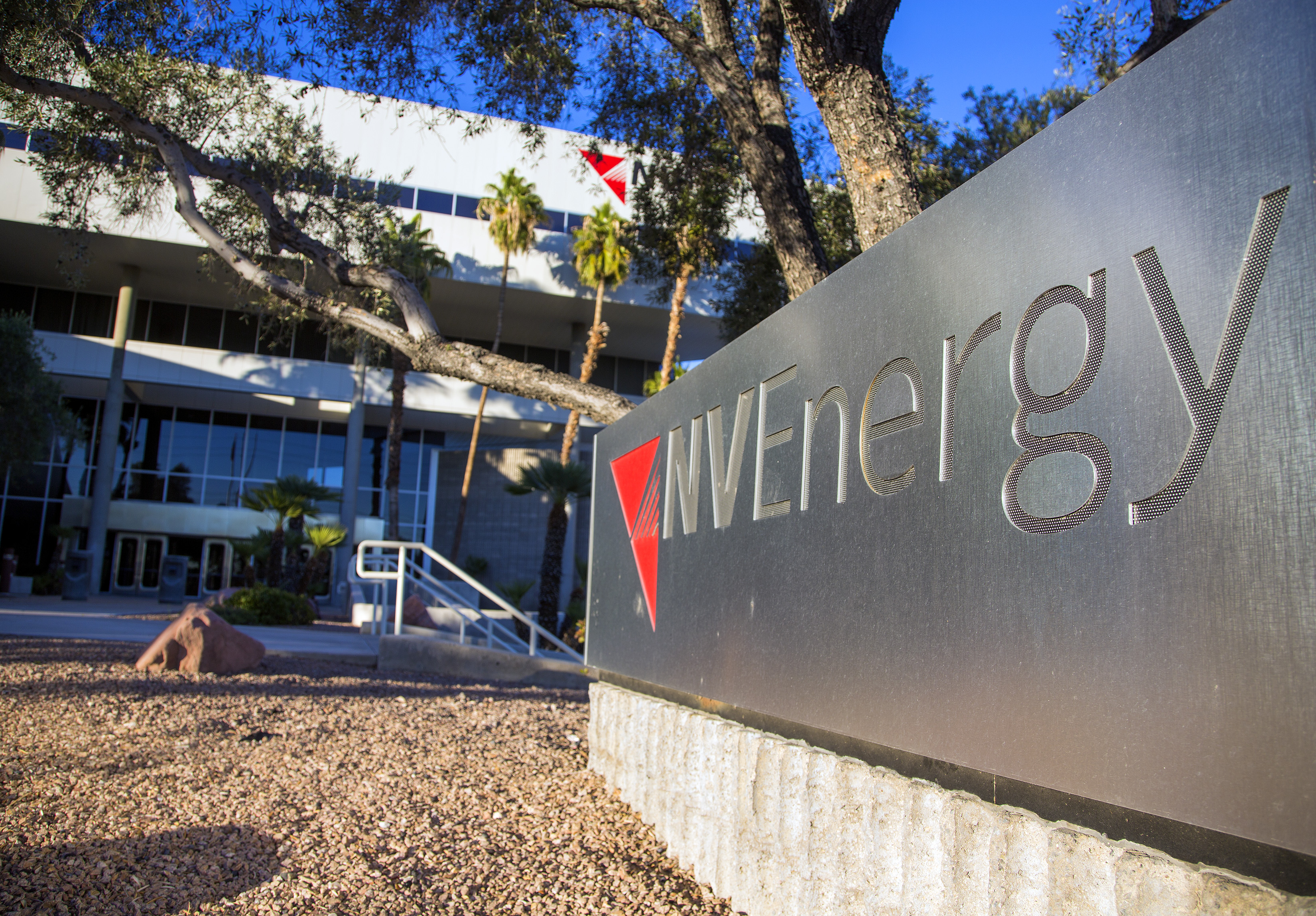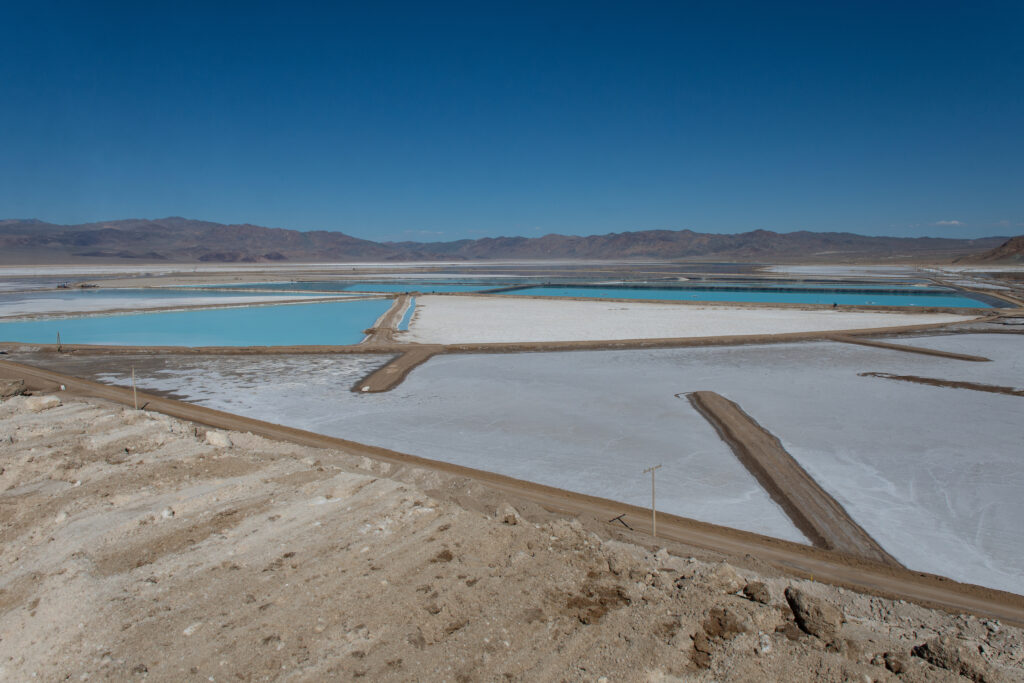As NV Energy pitches new gas power plant, some want regulators to give it more scrutiny

Good morning, and welcome to the Indy Environment newsletter.
As always, we want to hear from readers. Let us know what you’re seeing on the ground and how policies are affecting you. Email me with any tips or suggestions at [email protected]
To get this newsletter in your inbox, subscribe here.
Across the West, amid continually rising temperatures, record-breaking summer heat waves have caused spikes in power usage and strained the electric grid. Add to that a prolonged drought, amplified by climate change, which has left water storage reservoirs in deficits and led to uncertainties about how much utilities can depend on a once stable resource: hydropower.
At times of peak energy use — often the hottest summer days when everyone is turning on the A/C at once — Western utilities, including NV Energy, have issued emergency alerts. They have urged customers to conserve energy and reduce demand. During these times, utilities have had to import energy from out of state, calling on a crowded regional market when prices can spike.
Filling in the gaps has been difficult. Supply chain shortages have led to issues in bringing solar arrays online. Policy changes in how electricity is delivered through California in times of emergency have led to more uncertainty about access to power when usage peaks.
“Nevada is not immune and has experienced energy supply issues three years in a row,” NV Energy, the state’s largest electric utility, wrote in a filing to regulators in December. “Nevada’s historic reliance on the energy market to meet peak period demand is no longer viable and has introduced significant risk of energy shortfalls and associated rolling blackouts in recent years.”
With that filing, NV Energy asked state regulators to approve its plan to add new supplies to the grid — at a cost of more than $800 million.
The utility is asking the Public Utilities Commission of Nevada to approve a large battery storage system on the site of the Valmy coal plant in northern Nevada and a portfolio of geothermal plants. But in the short-term, the utility is banking on natural gas to fill the gap when demand peaks.
In the longer term, the utility’s plan calls for delaying the retirement dates of other gas plants, even as it transitions to meet the state’s goal of net zero emissions by 2050.
In some cases, the utility has pushed back retirement dates by a decade. That, in addition to the proposed construction of the natural gas turbines, has some groups asking whether there is a different approach that would discharge fewer emissions and leave the utility less exposed to spikes in natural gas prices.
A key component of the utility’s plan: Add 400-megawatts of gas-fired combustion turbines to the utility’s Silverhawk power plant at the Apex Industrial Park in North Las Vegas. The facility would be known as a “peaking plant,” a natural gas facility that could ramp up quickly when needed. It would not operate around the clock. The two turbines — expected to cost about $353 million — would only run about 700 hours per year to stay within emission rules.
Joshua Langdon, the utility’s vice president of transmission, described the peaking natural gas turbines as a “backstop.” He said the utility is building out renewable projects and called the proposal a “balanced plan.” NV Energy, however, has faced supply chain issues in bringing new projects online. Additional gas turbines, he argued, are needed to make the grid more reliable in cases when there is high demand or a renewable energy plant goes offline.
“The peaking units we propose really provide that flexibility to not only meet the peak in the middle of the summer, but also provide that backstop for unplanned types of events,” he said.
Last week, the utilities commission held an expedited hearing on the natural gas proposal; it will consider the battery storage project and geothermal project separately. In written testimony, clean energy advocates and Google, which has invested in Nevada data centers, called for more detailed modeling before regulators approved the $353 million peaking plant.
Western Resource Advocates testified that the utility needed to conduct “probabilistic modeling” — a statistical analysis of possible random occurrences — to better understand whether the gas plant might be needed. And Google urged the commission to postpone a decision until the utility analyzed how regionalization within the Western electric grid could affect the need to bring more supply online (regionalization discussions remain ongoing).
In many cases, the natural gas peaking plant would likely replace other carbon-emitting sources of power. When demand has peaked in the past, NV Energy has had to dip into an emergency supply at the Valmy coal plant. Clean energy groups argued the utility did not fully examine other emission-free options, including programs to reduce demand.
Sarah Steinberg, a policy director for Advanced Energy United, which represents businesses pushing for clean energy, called on the utility to take a more “holistic approach” to planning for summer peaks, echoing the organization’s formal comments to the commission.
The group wrote that “NV Energy is giving short shrift to a decision with significant implications for the state’s energy, economic, and environmental future — a decision that threatens to lock-in high capital costs and volatile fuel costs from out-of-state markets and lock-out investment in cleaner, more cost-effective, and more consumer-empowering advanced energy alternatives.”
Another major question facing utility regulators: What happens to the new turbines as the state moves away from natural gas? NV Energy has said the utility’s plan is to transition the facility to run on hydrogen, which would not emit carbon dioxide. How that would occur, on what terms and at what cost are issues the whole industry is watching.
In testimony, Google recommended utility regulators require NV Energy to submit a detailed plan outlining how it would use hydrogen at the gas facility and the associated costs.
Staff for the utilities commission recommended state regulators approve the construction of the gas turbines but with a retirement date of 2050 rather than 2054 as proposed to comply with the state’s climate goals. The turbines, staff argued, were a “reasonable” proposal.
The commission staff outlined issues facing the state, including a gap in electricity that has forced NV Energy to look for power on a saturated market and exposed the state to shortages. In addition, two solar and battery storage projects have been taken out of the utility’s supply portfolio, highlighting a need for more generation over the next few summers.
Without building the gas plants, staff said “the sole plan would be crossing our fingers two or three weeks of the year,” hoping California does not limit exports through its power lines and large customers, including many big casinos that have left the utility, can access power.
Tony Sanchez, NV Energy’s executive vice president of business development and external relations, said the utility would like to bring more renewables online. But he said “there’s been some real constrictions in the renewable energy development arena over the last year that have impacted our plans,” noting several approved projects are no longer being built.
“So the answer is not always just build more renewables,” he said. “We’d love to and we have contracts that were approved by the commission that are not going to be built now. That has to be acknowledged as one of the reasons why we have to have [a] balanced portfolio.”
- Another gas development to watch: In the Legislature, there is likely to be a bill proposing an infrastructure planning process for gas utilities (both Southwest Gas and NV Energy market natural gas across the state). Unlike planning for electric utilities, natural gas providers face little regulatory oversight before expanding or building new infrastructure. That has raised concerns about stranded assets and saddling ratepayers with potentially imprudent costs — especially amid the transition from fossil fuels. Southwest Gas beat back a planning effort in 2021. This comes as Southwest Gas is under fire from environmental groups and the public for rate increases, as the Nevada Current’s Jeniffer Solis reported.

Here’s what else I’m watching this week:
Tribes, environmental groups take new legal action against Thacker Pass mine: Several environmental groups are asking a district court judge to halt construction of the mine until the 9th Circuit can hear an appeal of a recent ruling that affirmed a federal mine permit. The tribal governments — the Reno-Sparks Indian Colony, the Burns Paiute Tribe and the Summit Lake Paiute Tribe — also have filed a new lawsuit challenging the mine permit. More on that here.
- Over the weekend, I took a deeper look at lithium mining across the state.
“This is like slapping a Band-Aid on a severed limb:” A quote from an excellent and moving piece by the Source NM’s Danielle Prokop looking at the challenges of fish recovery — and survival — in a Rio Grande that is under extreme stress. This is a must-read story well told.
The Los Angeles Times’ Ian James reports on Gov. Gavin Newsom’s controversial request to waive environmental rules in the Sacramento-San Joaquin River Delta.
“A poll shows a plurality of Nevada registered voters — 39 percent — think Nevada is not doing enough about climate change, though 54 percent of respondents opposed banning gas stoves,” my colleague Naoka Foreman reported last week. Here’s the full story.
- The Las Vegas Review-Journal’s Colton Lochhead looks at the results of a bipartisan Conservation in the West Poll. A big issue on the top of everyone’s mind: water.
The Center for Biological Diversity, along with a former member of the State Environmental Commission, sued last week to challenge Gov. Joe Lombardo’s appointment of former state Sen. James Settelmeyer to lead the state’s natural resources agency. They argue the appointment could violate the Nevada Constitution. More from my colleague Jacob Solis.
From a Desert Research Institute study: “Unlike municipal water systems, well water quality in private wells is unregulated, and a new study shows that more than 49 thousand well users across the region may be at risk of exposure to unhealthy levels of arsenic in drinking water.”
